Are your poor little aquatic creatures, suffering from ich fish disease and here you are searching “How to treat ich?” Well, you don’t have to anymore, because we have got you covered!
As an aquarium enthusiast, we have witnessed multiple challenges during fish keeping, and how to treat ich has always been a very worrisome issue for me. You won’t believe how quickly does ich kill fish one after another! But, fear not, with our tried-and-true approach, we are going to share some few best go-to methods that will eliminate this pesky ich fish disease in just a few weeks.
So, let’s delve in to explore the strategies for producing effective ick treatment for your fish, so they can thrive and enjoy their aquatic habitat to the fullest.
Disclosure: This article contains affiliate links. When you follow a link to purchase the products, I sometime earn a commission, at no additional cost to you. Read my full disclosure here.
What is Ich Fish Disease?
Ich on fish, commonly referred to as white spot disease or “ick,” is a prevalent condition among freshwater aquarium fish caused by the external parasite called Ichthyophthirius multifiliis. This pesky protozoan attaches itself to various parts of the fish, such as their fins, body, and gills, creating small whitish capsules on their surface. Once fully fed and developed, these parasites detach from the host and rapidly multiply in numbers by releasing numerous new ich protozoa into the surrounding water.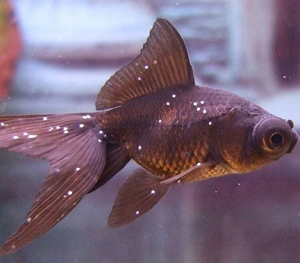
Causes of Ich Fish Disease
White spots on fish are mainly caused by failing to isolate new fish before adding them to the main aquarium. However, the other ways through which ich on fish can be transmitted are;
- Using infected equipment
- Moving contaminated materials
- Introducing plants that carry ich tomonts.
Signs and Symptoms of Ich on Fish
Since you are quite aware of how quickly does ich kills fish, you must be in a rush to find the most effective way of how to treat ich. But, before doing that we will suggest you learn the differences between ich on fish and other fish diseases. The 5 main signs of ich fish disease are;
- Tiny white spots on fish’s body and fins specifically.
- Irritation can prompt the fish to scratch against objects or flash around.
- Excessive flashing might lead to bruising or loss of scales.
- The fish may appear sluggish and it could be observed that it is breathing heavily.
- Unexpected deaths in an aquarium, possibly affecting multiple fish.
These white spots on fish are sometimes mistaken for other harmless conditions like fin ray fractures or breeding tubercles in aquarium fish. Therefore, it’s important to have an accurate diagnosis for ich in fish to administer the most effective ick treatment.
How to Treat Ich Fish Disease?
We have divided the ick treatment into 3 simple steps for you to understand and follow easily. Make sure you stick to them for the best results to treat ich on fish!
Step 1: Feed your Fish Garlic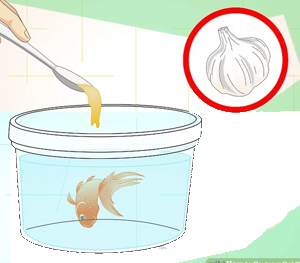
When there is ich on fish, they often lose their desire to eat, making it difficult to help them recover. However, there is a natural remedy that can be highly effective – garlic. It can be used in 3 different ways;
Garlic helps stimulate the fish’s appetite and encourages them to eat even when dealing with Ich. One popular option is to incorporate garlic into their diet using specialized fish food such as New Life Spectrum Thera-A which contains high levels of garlic and is suitable for various types of fish. Once the ich on fish has been eradicated, you can switch back to their regular diet.
Secondly, if your fish have specific dietary requirements, you may consider using concentrated garlic solutions like Garlic Guard which are specifically designed for ich on fish aquarium use. Alternatively, you can create your own infusion of garlic which will provide added strength for your fish in combating white spots on fish.
- Peel and cut the ends of the garlic clove.
- Put the clove for 10 seconds in the microwave.
- Slice it thinly.
- Soak strips in dechlorinated water.
- For a stronger solution, leave it out for 12 hours or more at room temperature.
- The garlic mixture can be kept in the refrigerator for up to two weeks.
Step 2: Increase the Water Temperature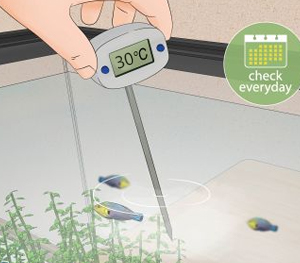
To avoid harming the fish, it is important to gradually raise the water temperature when treating Ich. Instead of setting the temperature directly to 30˚C, it is advised to gradually increase it by 1˚C every hour.
Now, you have to be very cautious when increasing temperature and have to monitor constantly for fish safety.
Moreover, in some situations, increasing the temperature in a fish tank may not be ideal. This is especially true for overstocked tanks, or heat-sensitive fish. This is because, an increase in temperature can lead to lower levels of oxygen in the water, and thus it will result in difficulty breathing for fish. To address this issue of breathing when dealing with ich on fish, there are a couple of options you can consider.
One option is to add an air pump and airstone to enhance oxygenation within the tank. If you happen to have goldfish or other heat-sensitive species, it’s important that when adjusting the temperature it should only be increased by a manageable amount – one that won’t harm them.
Note: You can skip this step but it will take longer to cure ich on fish.
Step 3: Chemical Medications
Ich-X
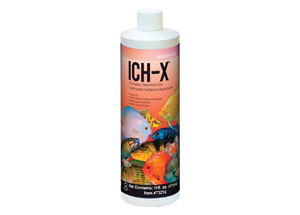
Quick view on Amazon
Available in: Australia, Canada, UK and US
- To treat ich on fish in your aquarium, add 5 ml of Ich-X per 10 gallons of water and let it sit for 24 hours. Avoid using a lower dosage for sensitive fish, as it may not effectively eliminate the ich parasite.
- After 24 hours, change one-third of the water in the aquarium and repeat the dosage of 5 ml per 10 gallons. Make sure to treat the entire volume of water, not just the water that you removed.
- Repeat this process every 24 hours until you no longer see any visible signs of ich on the fish.
- After the last white spots on fish, carry out Step 4 one more day to make sure any hidden cysts are removed. Only protozoa that are swimming freely can be killed by the medication; cyst-protected protozoa cannot.
- When you perform your routine water change, leave the medication in the water and gradually drain it.
- The fish’s body might have damaged tissues due to wounds and white spots on fish. Thus keep an eye out for any indications of secondary infections and take appropriate action.
ParaGuard
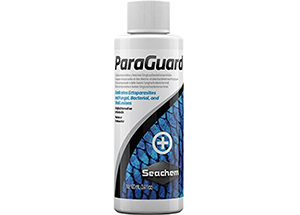
Quick view on Amazon
Available in: Australia, Canada, UK and US
ParaGuard by Seachem contains malachite green. However, if used as directed, it should not result in white spots on fish staining due to its lower concentration of malachite green compared to other ick treatments for the Ich parasite. Some aquarium enthusiasts favor ParaGuard over products like Ich-X because they perceive it to have fewer adverse effects on delicate fish species.
According to Seachem, it is recommended to start with a small dose of ¼ and then gradually increase it for ich on fish such as loaches and catfish.
Moreover, an additional advantage of using ParaGuard is its ability to address secondary infections that may arise from ich fish disease.
Cupramine
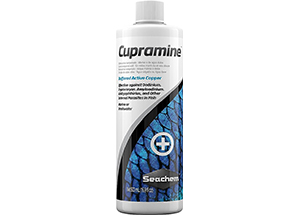
Quick view on Amazon
Available in: Australia, Canada, UK and US
Cupramine is a highly effective method for eliminating white spots on fish and other parasites while your fish are isolated. Yet, it’s crucial to be cautious about utilizing it in the main tank as it can be toxic to shrimp, snails, and certain plants. Once you’ve completed the ick treatment process with Cupramine, make sure to eliminate any remaining traces of copper by using chemical filtration.
- To administer Cupramine and treat ich on fish, set up a separate quarantine tank.
- According to the fish species and tank size, use Cupramine at the recommended dosage.
- To ensure that all parasites have been eliminated, watch over and treat the fish for a few weeks.
- The fish can be safely introduced to your main tank after ick treatment is complete without running the risk of attracting Ich or other parasites.
Can We Use Aquarium Salt for Ick Treatment?
A slight increase in salt concentration can provide relief to fish external tissues from the parasites. For ich on fish, in warmer water temperatures (75–79°F), a recommended ick treatment involves using 4–5 grams of salt per liter or approximately 4-5 parts per thousand for a prolonged bath over 7 to 10 days.
However, it is important to ensure that the specific fish species are able to tolerate higher levels of salt. To enhance effectiveness, tanks undergoing formalin treatment often have an additional salt concentration of 3–5 parts per thousand added since this stage of parasites called theronts are sensitive and respond well to increased salinity.
Preventing Ich Fish Disease
The best method to control ich fish disease or white spots on fish in aquariums is prevention in the first place. When setting up the aquarium, precautions should be taken to prevent the introduction of ich on fish, plants, or water.
Here are some prevention steps that you must follow, so that you won’t be searching how to treat ich any longer!
- Quarantine Fish
To avoid the risk of ich on fish, it is recommended to isolate newly purchased fish for a period of one to ten days before adding them to your main aquarium. If you notice any signs of ich fish disease during this quarantine period, make sure to treat them in a separate tank.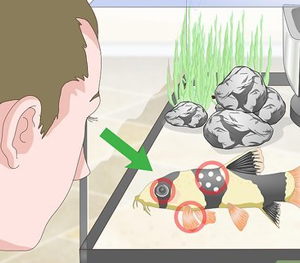
- Wash and Air-dry Aquatic Decorations and Plants
Thoroughly washing and air-drying them for 48 hours will effectively eliminate any potential parasites and hence reduce the chances of white spots on fish.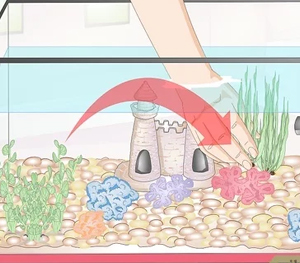
- Early Detection
Fish may display unusual behavior, such as blinking, scratching, or leaping out of the water, which indicates ich fish disease. Although, in the early stages of infection there may not be any visible white spots on fish. Compared to severe infections, fish have a higher chance of survival when treated early or with a mild infection.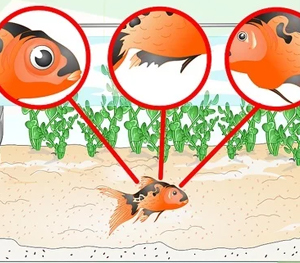
Conclusion
If you see white spots on fish, it means that they are in the feeding stage of an infestation. Unfortunately, this stage is resistant to ick treatment. However, if the parasites are still in their free-swimming stage, there is hope for effective ick treatment.
Acting quickly is essential because infestations can spread rapidly and water temperature plays a role in the life cycle of these pests. To ensure your fish fully recovers from the ich on fish problem in your aquarium, it’s important to stay vigilant and use efficient ick treatment methods.



